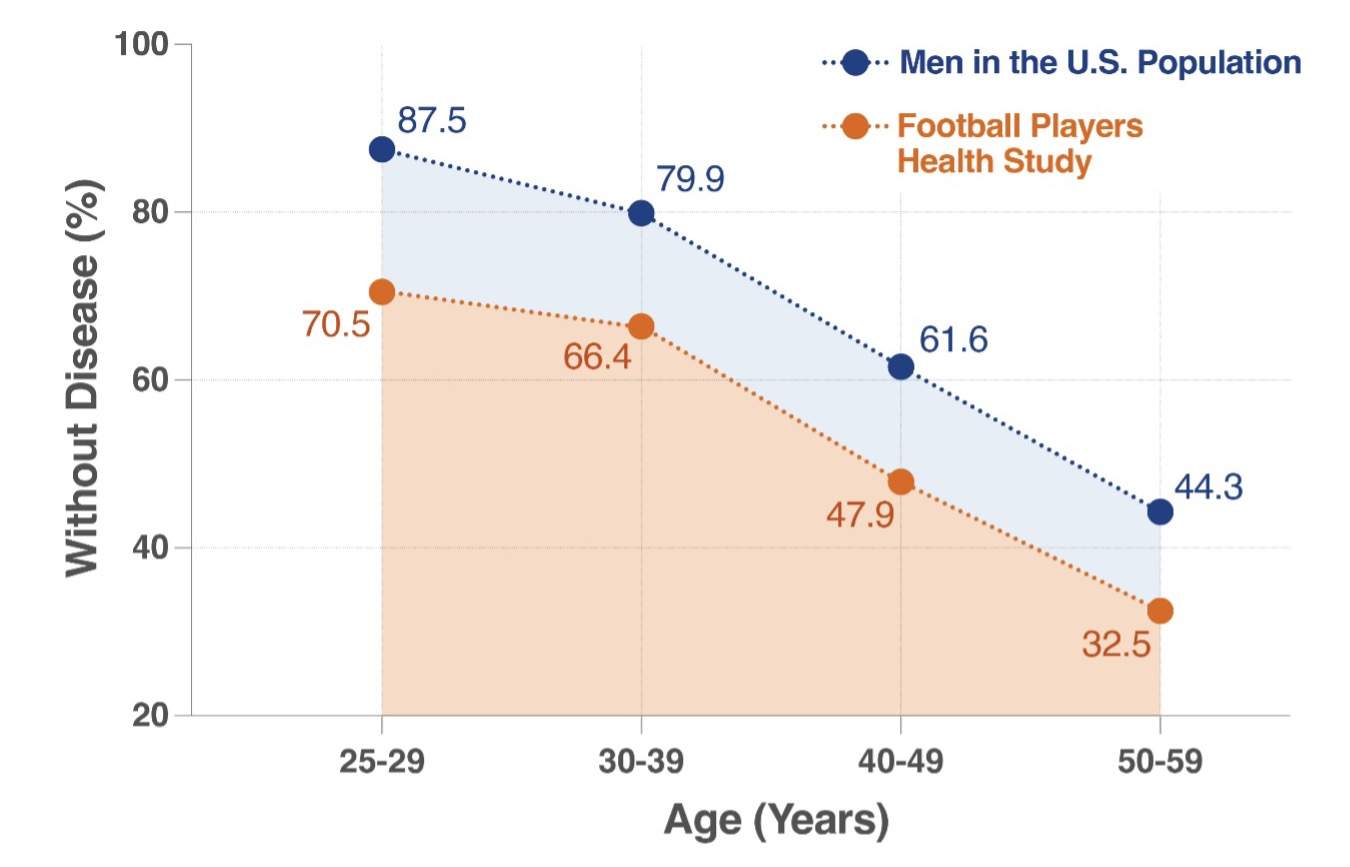
15 Dec NFL Players Found to Lose About 10 Years of HealthSpan
MedicalResearch.com Interview with:

Dr. Grashow
Rachel Grashow PhD
Research Scientist
Department of Environmental Health
Football Players Health Study at Harvard University
Harvard T.H. Chan School of Public Health
MedicalResearch.com: What is the background for this study?
Response: Anecdotally, we heard from former NFL players that they felt older than their chronological age. At the same time, doctors and medical care providers treating former players also observed that players appeared clinically older in some health domains. These observations motivated us to ask: despite superior fitness and success as young men, are football players experiencing early aging and living with illness and disability for more years than their non-football peers?
MedicalResearch.com: What are the main findings?
Response: We found that a number of conditions associated with aging are occurring significantly earlier for former NFL players including diabetes, hypertension, dementia/Alzheimer’s Disease, and arthritis when compared to American men of the same age, race and BMI. While we understand why these conditions might be more prevalent (e.g., as the result of orthopedic or head injury), it is noteworthy that the premature occurrence of these illnesses will detrimentally affect players for more years than their non-NFL peers. Overall, the number of years free from chronic illness is reduced in former players, such that former NFL players lose approximately 10 years of healthspan (see Figure below).

What We Found:
- As expected, our research confirmed that hypertension, diabetes, arthritis, and dementia all increased with age in both football and general populations.
- However, the proportion of players who experienced these conditions was different from non-players. For both arthritis and Alzheimer’s disease/dementia, we found an increase in self-reported diagnoses across all ages.
- For hypertension and diabetes, a higher proportion of former players reported these conditions only in the youngest age group (25–29).
- Our findings showed that players, on average, had ten fewer years of healthspan, meaning they were without hypertension, arthritis, Alzheimer’s/dementia, and/or diabetes (as shown in the graphic below). This means that former players reported “loss of health” (reporting at least one of the four conditions of interest) appropriately ten years earlier than non-football American men.
- Among football players, linemen were more likely to report at least one of the conditions studied compared to non-linemen under the age of 50.
MedicalResearch.com: What should readers take away from your report?
Response: We want to support current and former professional athletes to be proactive about their long-term health cardiovascular, metabolic, musculoskeletal, and cognitive health. We encourage anyone experiencing cognitive symptoms to reach out to their primary care provider or a neurologist to determine whether other conditions like sleep apnea, mood disorders, or specific medications may be contributing to cognitive dysfunction. Athletes and non-athletes can stay healthy and extend their lifespan and healthspan by maintaining a social network, healthy diet, and exercise routine.
In terms of clinical practice, we hope that this paper motivates physicians and others who provide medical care for former players to pro-actively screen even young post-career players for these conditions. Efforts to prevent and treat the cardiometabolic conditions early in life could have important protective neurological and cardiological implications for later-life health.
MedicalResearch.com: What recommendations do you have for future research as a results of this study?
Response: By highlighting the need to identify young and middle-aged players who may harbor conditions of interest, this study lays groundwork for future interventions (pharmacological, procedural, and behavioral) that could lead to positive changes in both length and quality of life in former professional athletes. Research that examines established biochemical, cellular, and physiologic signatures of aging in this former professional football players may also yield important insight for post-career player health.
I have no disclosures to add.
Citation:
Grashow R, Shaffer-Pancyzk TV, Dairi I, et al
Healthspan and chronic disease burden among young adult and middle-aged male former American-style professional football players
British Journal of Sports Medicine Published Online First: 07 December 2022. doi: 10.1136/bjsports-2022-106021
The information on MedicalResearch.com is provided for educational purposes only, and is in no way intended to diagnose, cure, or treat any medical or other condition. Always seek the advice of your physician or other qualified health and ask your doctor any questions you may have regarding a medical condition. In addition to all other limitations and disclaimers in this agreement, service provider and its third party providers disclaim any liability or loss in connection with the content provided on this website.
Last Updated on December 15, 2022 by Marie Benz MD FAAD
